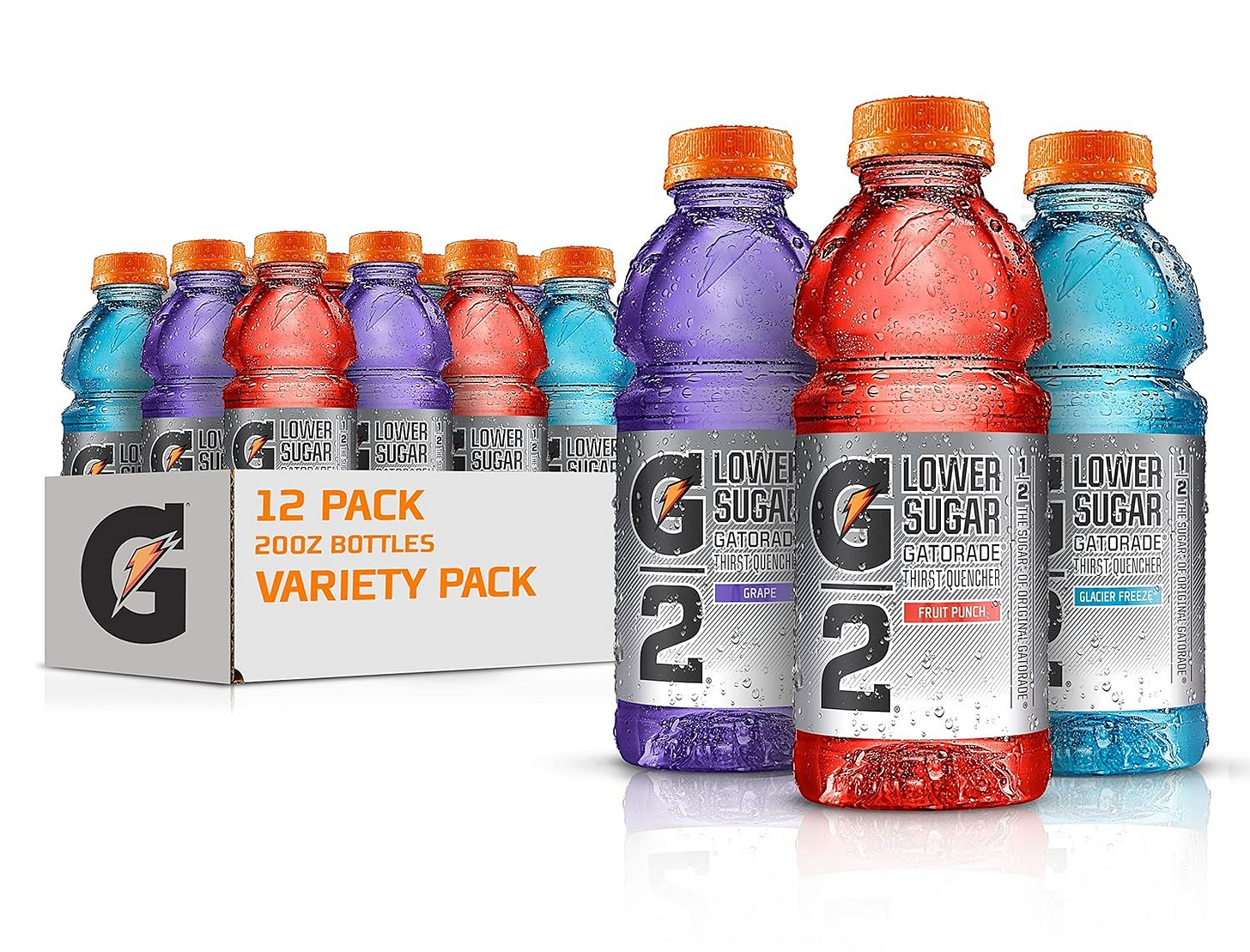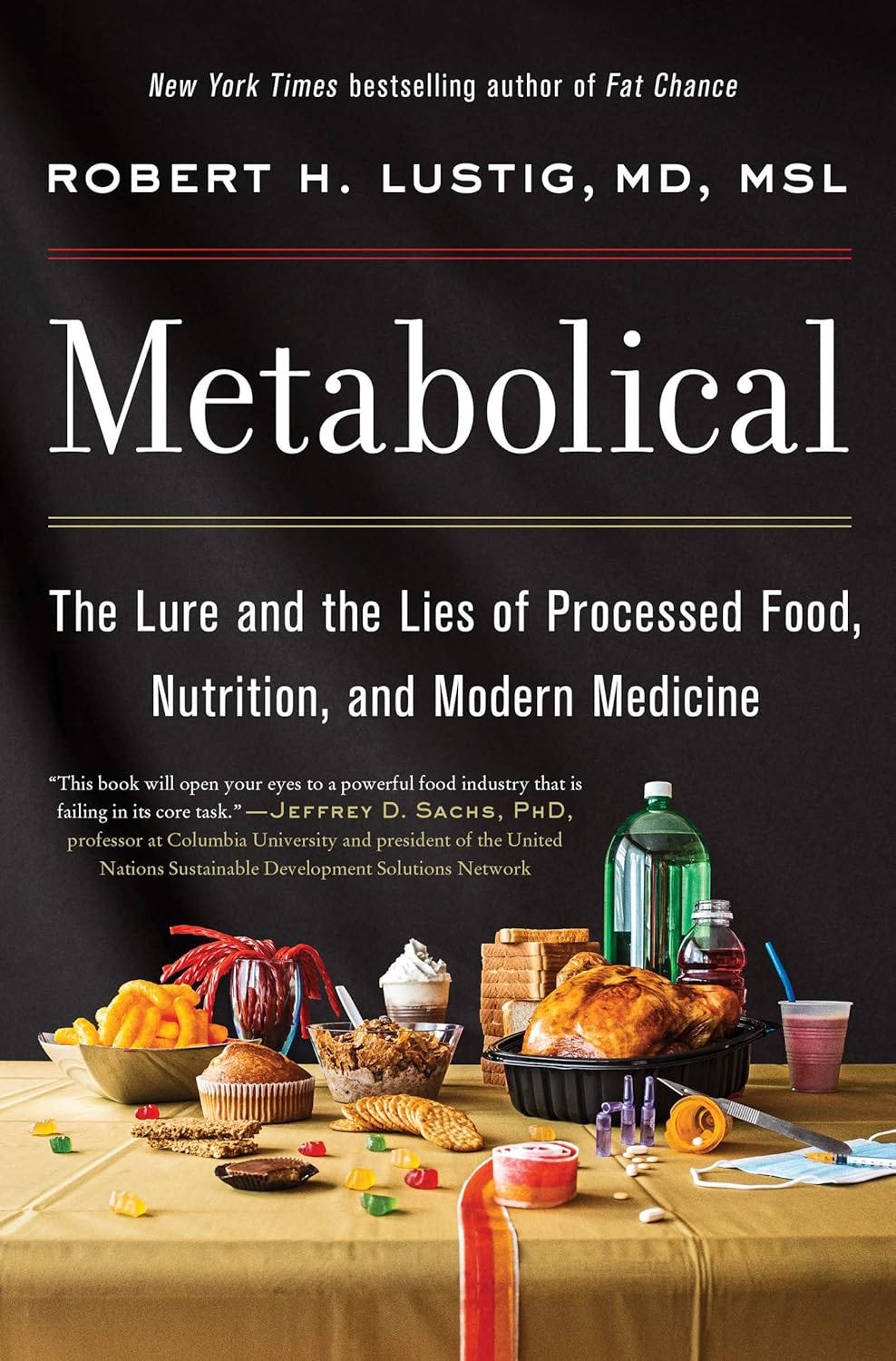Energy & Sports Drinks: 'Goo' is Not Good for Performance
Ultra-processed junk disguised as hydration.
When I was a competitive athlete in my 20’s and 30’s (and early 40’s), Gatorade was a big deal.
Red. Orange. Yellow. Green. Blue. Purple.
Gatorade came in all of the colors of the rainbow and in various flavors.

I tried it a couple of times, but it was so icky-sweet that I couldn’t choke it down, so I found other brands like Vitamin Water that were less sweet and still tasted okay.
I was also a huge fan of Clif Shot Blocks. They are like gummi bears but shaped like a cube with a variety of ingredients - such as caffeine and “organic maltodextrin” - that Clif claims are good for high performance athletes.
Clif Shot Blocks and Vitamin Water were my go-to’s for marathon-length race events and long endurance training sessions. The quick carbohydrates did the trick to pick up where my pre-activity meal left off, and I think that the caffeine helped me fight that mid-race energy crash.
But, when I started on The Goo-Free Lifestyle journey to lose weight, get healthy, and stop feeling so lethargic, all of these products had to be eliminated from my diet.
I had to find Goo-Free alternatives.
My story may not be that convincing, but this one sure is…
This is an excerpt from the book:
Metabolical: The Lure and the Lies of Processed Food, Nutrition, and Modern Medicine
by Robert Lustig.
“…can’t I just exercise past my bad diet? Won’t an extra ten minutes on the elliptical trainer solve everything? Amateur Finnish triathlete Sami Inkinen tried and failed. Sami was one of the original founders of Nokia, sold his shares early, and moved to the US to attend Stanford Business School. There he started the real estate website Trulia, which was bought by Zillow for $2.5 billion. In other words, Sami had more money than God—and he exercised five hours per day.
Nevertheless, by age thirty-eight, his performance was down. His glucose tolerance test revealed that he was a prediabetic. He didn’t get it—how can a triathlete be prediabetic? He consulted UC Davis professor and low-carb physician Dr. Stephen Phinney, who has the answer: it was the sports drinks. Caffeine has its own effect on insulin resistance separate from fructose, and together they can cause their own brand insulin resistance and glucose intolerance, ratcheting down some of the beneficial effects of exercise.” (pages 157-8)
Dr. Lustig continues on to explain the details of how this might be possible and how human biochemistry works. I’ll leave you to get the book and read it in more detail on your own.

Energy and sports drinks are not what you think.
If you’ve been reaching for an energy drink to power through the afternoon slump or grabbing a sports drink after a workout, you might want to take a closer look at what you’re actually consuming.
These beverages are often marketed as performance enhancers, hydration solutions, and energy boosters.
But, in reality, they are loaded with ultra-processed ingredients that do more harm than good.
The ‘Goo’, the Bad, and the Ugly
Most energy drinks and sports drinks contain a shocking amount of processed junk.
Here are some of the worst offenders:
Artificial Colors: Bright blues, neon greens, and electric reds aren’t natural. They come from petroleum-derived food dyes like Red 40, Yellow 5, and Blue 1, which have been linked to hyperactivity and potential health risks. Thankfully, Red #3 has been banned.
Artificial Flavors: That fruity, tropical, or citrus taste? It’s often not from real fruit but from lab-created chemicals designed to mimic real flavors. Read more about Natural Flavors here.
High-Fructose Corn Syrup (HFCS) or Processed Sugar: Many of these drinks are sugar bombs, with some containing as much sugar as a can of soda. Excess sugar intake leads to energy crashes, insulin resistance, and weight gain. Some “natural” sugars are actually ultra-processed.
Artificial Sweeteners: If it’s labeled “sugar-free,” that doesn’t mean it’s good for you. Artificial sweeteners like sucralose and aspartame can disrupt gut health and may trigger cravings for more sweets. Read more about Stevia here.
Preservatives and Stabilizers: Ingredients like sodium benzoate and potassium sorbate help extend shelf life but have been associated with potential health concerns. Learn more about Food Scientists.
Synthetic Vitamins and Electrolytes: The added vitamins and minerals in these drinks aren’t the same as the ones you get from real food. Many are synthetic versions that your body may not absorb efficiently.
Health impacts of drinking ‘Goo’
Even though these products are labeled as performance enhancing, and are intended to support athletic endurance, energy and sports drinks (when consumed regularly) can lead to a variety of health issues, including:
Blood Sugar Spikes and Crashes: The high sugar content causes a rapid rise in blood sugar, followed by an inevitable crash that leaves you feeling worse than before.
Dehydration: Many of these drinks contain caffeine, which is a diuretic, meaning it can contribute to dehydration rather than hydration.
Increased Cravings: The combination of artificial sweeteners and sugar can create a cycle of cravings, leading you to consume more sweet processed foods.
Gut Disruption: Artificial ingredients and preservatives can negatively impact gut health, leading to bloating, indigestion, and other digestive issues.
Overall, the negative impacts can ‘undo’ the positive affects.
Even if you are not an “athlete”, it’s time to reconsider what you are drinking.
Healthy and Nutrient-Dense Drinks
Ditching energy drinks and sports drinks doesn’t mean you have to go without hydration or an energy boost.
Here are some better options:
Water: The best hydration you can get. Keep it simple!
Coconut Water: A natural source of electrolytes without the added junk. Be sure to read the labels as some commercial coconut water products have additives.
Herbal Teas: Many herbal teas offer a natural energy boost without artificial additives. Watch out for “natural flavors” in your tea. Read more about tea here.
DIY Electrolyte Drinks: Mix water with a pinch of sea salt, fresh lemon juice, and a touch of pure honey for a natural electrolyte boost. Beware: “pure honey” is hard to find, these days, and you can read more about “honey fraud” here.
Coffee or Matcha: If you need an energy lift, stick with plain coffee or matcha (a type of tea), which provide natural caffeine without the artificial additives. Read more about coffee creamer here.
There are plenty of other healthy options for making your own energy drinks, and you may find a few varieties on store shelves that are not quite as bad as Gatorade or Vitamin Water.
The Bottom Line
Energy drinks and sports drinks may seem like a quick fix for hydration or energy, but they are often packed with the very things you should be avoiding.
The next time you’re tempted to grab one, read the label.
Check The Goo Index to see if there’s Goo in your energy or sports drinks!
If it’s full of ingredients you can’t pronounce, it’s time to reconsider. Stick to real, whole-food-based hydration, and your body will thank you.
Want to learn more about how to cut ultra-processed foods from your diet?
Subscribe to The Goo-Free Lifestyle and take back control of what you put in your body.
If you’re not sure about a specific ingredient and want to learn more about whether it qualifies as Goo, leave a comment or reach out and ask me!
And if you enjoyed reading this story, but aren’t ready to subscribe, you can:
(a Goo-Free coffee, of course!)






This was a great read thank you for sharing!
Thanks! Just what I was looking for. I'm not a fan of coconut water, taste like dirt to me. But I'd be game to try salt and lemon in my morning water!